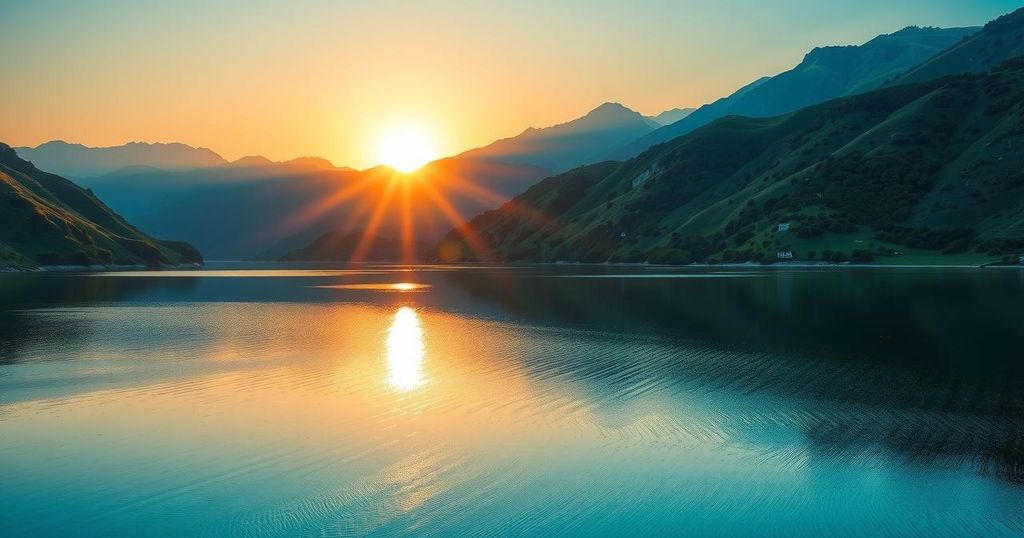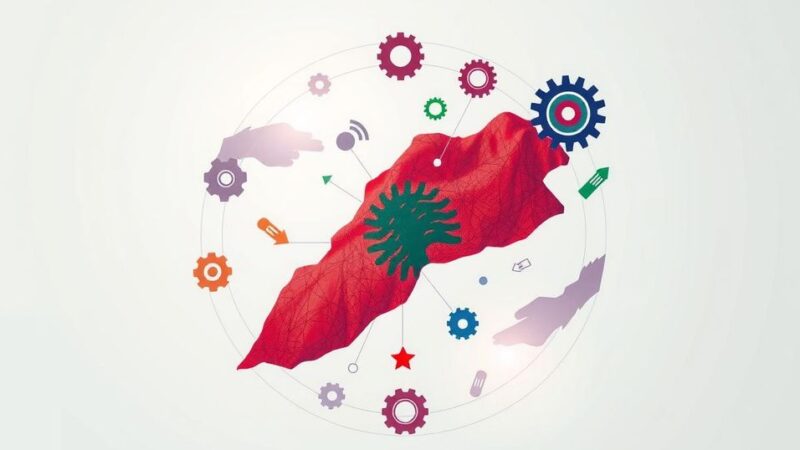The conflict in the Democratic Republic of Congo’s eastern region is driven by competition for control over rich mineral resources, exacerbated by historical tensions dating back to the 1994 Rwandan genocide. The M23 rebel group recently captured Goma, claiming it controls the city, while the Congolese government contests this. Rwanda’s alleged support for the M23 continues to fuel the conflict, complicating peace efforts in a region plagued by decades of violence and instability.
The ongoing conflict in the eastern Democratic Republic of Congo (DRC) has persisted for over 30 years, initially ignited by the consequences of the 1994 Rwandan genocide. In this mineral-rich region, various armed factions vie for power and control over valuable resources, resulting in widespread instability that has drawn in neighboring nations, leading to catastrophic outcomes, notably the severe conflicts of the 1990s.
Currently, the M23 rebel group has made significant advances, overtaking Goma—an essential urban center in the east with over a million residents, strategically located near Rwanda and rich in valuable metals. While the rebels assert total control over Goma, the DRC government claims that its military still occupies critical areas within the city.
The M23 is predominantly comprised of ethnic Tutsis, who contend they resorted to armed conflict to safeguard their minority rights, citing unfulfilled agreements as the catalyst for their resurgence. Originally formed in 2012, the group gained territory and seized Goma, inciting widespread condemnation for alleged war crimes, but eventually withdrew and integrated into the army, claiming broken promises regarding Tutsi protection prompted their rearmament in 2021.
Allegations of Rwandan involvement with the M23 persist, with various parties, including the U.S. and France, attributing support to Rwanda, which has denied such claims. A recent UN report estimated that up to 4,000 Rwandan troops were engaged alongside M23 forces. Despite declarations that the recent violence represents a security threat to Rwanda, their involvement remains a point of contention, with accusations that they have been scapegoated.
The conflict’s roots can be traced back to the aftermath of the Rwandan genocide, which led to mass displacement and the rise of ethnic tensions in the DRC. As a result of the genocide that claimed around 800,000 Tutsis, a large number of Hutus fled to the DRC, exacerbating ethnic strife. Rwanda’s military interventions in the DRC aimed primarily at eliminating threats from Hutu groups linked to the genocide, yet tensions remain with groups like the Democratic Forces for the Liberation of Rwanda (FDLR), which continue to operate in eastern DRC.
In summary, Rwanda’s ongoing involvement in the DRC is likely to persist until the perceived threats posed by the FDLR are adequately addressed, and concerns for Tutsi safety in eastern DRC are resolved. Observers note that the complex dynamic surrounding mineral resources fuels ongoing conflict, as various factions—including Rwanda—seek to exploit these valuable assets.
The conflict in the eastern DRC has been ongoing for decades, stemming from historical tensions exacerbated by the Rwanda genocide in the 1990s. The DRC is abundant in minerals, making it a focal point for various armed groups attempting to assert control over these resources. The region’s instability has tragic historical precedence, having led to massive loss of life in the past, indicating a long-standing struggle over both power and wealth. The emergence of the M23 in this context highlights the intersection of ethnic strife, historical grievances, and geopolitical interests involving regional powers such as Rwanda, complicating peace efforts and reflecting the deep-seated issues at play. The prevailing situation in Goma not only exemplifies the ongoing violence but also underscores the broader socio-political ramifications tied to resource conflicts in central Africa, with implications that resonate beyond national borders.
The DRC conflict, now centered in Goma, epitomizes a complex interplay of historical grievances, ethnic tensions, and resource competition. The ongoing activities of the M23 rebel group and the allegations of Rwandan support signify a persistent cycle of violence and instability. Until the root causes are adequately addressed—in particular, the threats posed by the FDLR and the protection of ethnic Tutsi rights—long-term peace in the region remains elusive. The international community must play a crucial role in mediating dialogue and fostering comprehensive solutions to ensure stability in the eastern DRC.
Original Source: www.bbc.com






